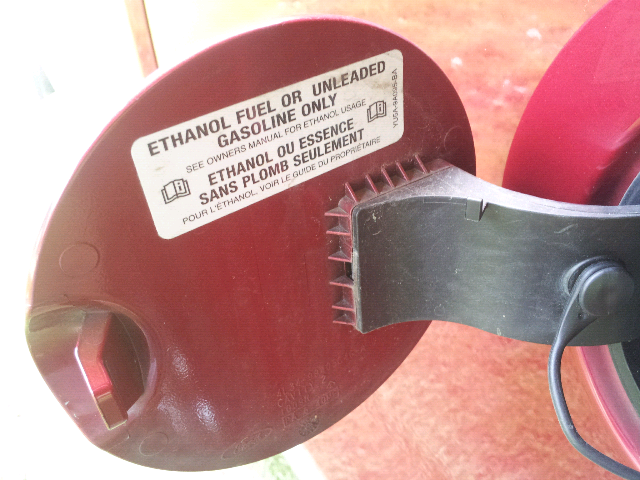What Does Flex Fuel Mean On F150
Last Updated on by David Jon
In today’s article, “What Does Flex Fuel Mean On F150,” we will offer succinct yet comprehensive insights on what this term actually means, its importance, benefits, and how it impacts vehicle performance. Providing clarity to Ford owners, Do-It-Yourself enthusiasts, mechanics, and anyone who finds interest in Ford maintenance, we will address this topic in an easy-to-understand, engaging, and professional manner. Get ready to unravel the intriguing world of Flex Fuel in the context of the well-beloved F150 model.

Understanding Flex Fuel
Concept of flex fuel
Flex fuel, also known as E85, is a type of alternative fuel that is a blend of 85% ethanol and 15% gasoline. The main difference between regular gasoline and flex fuel is the high content of ethanol in the latter. The term ‘flex fuel’ stems from the fact that vehicles designed for this fuel type can run both on regular gasoline and ethanol blends, offering flexibility to the consumer.
Benefits and drawbacks of flex fuel
There are several benefits to using flex fuel. Primarily, it provides consumers with a choice at the pump. With more options, drivers can decide what to fuel up with based on current fuel prices or their personal environmental concerns. Flex fuel is a renewable resource, derived from corn and other crops, contributing towards energy independence. Furthermore, using flex fuel reduces greenhouse gas emissions and supports local agriculture industries.
However, there are also certain drawbacks to using flex fuel. Its energy content is lower than that of gasoline, which can result in decreased fuel efficiency. There can also be a lack of availability as not all service stations supply flex fuel.
The science behind flex fuel
Flex fuel works on the principle of combustion, just like regular gasoline. However, due to the high ethanol content, it has a higher octane rating which translates into increased engine performance. Ethanol’s oxygen content also allows for more complete fuel combustion, reducing harmful emissions.
Significance of the Flex Fuel Badge on F150
What the flex fuel badge indicates
The flex fuel badge on a Ford F150 signifies that the vehicle has a flex-fuel engine. This tells the driver that the vehicle can run on both regular gasoline or a blend of gasoline and ethanol (E85).
Unique F150 features due to flex fuel
Flex Fuel F150s come with unique features that help enhance their performance. They possess a special fuel sensor that detects the ethanol-to-gasoline ratio in the fuel. Depending on this ratio, the vehicle’s computer adjusts the fuel injection and ignition timing to achieve optimal performance and efficiency.

The History of Flex Fuel on Ford F150
When flex fuel was introduced in Ford F150
Flex fuel technology was first introduced in Ford F150 series in the year 1999. At that time, it was considered a significant step towards making vehicles more eco-friendly.
The evolution of flex fuel in the F150 series
Over the years, Ford has continued to build upon its flex fuel technology, improving efficiency while reducing emissions. Modern F150s come equipped with advanced ethanol sensors and sophisticated engine management systems that allow these vehicles to run more efficiently than ever before, irrespective of the type of fuel used.
Flex Fuel Capabilities of Ford F150
Types of fuel F150 can accommodate
Flex fuel F150s can run on gasoline, E85, or any blend of the two. This gives drivers the freedom to choose the fuel they want to use based on cost, availability, or environmental considerations.
Performance difference between different fuel types
While flex fuel F150s can run on a variety of fuel types, the type of fuel used can influence the vehicle’s performance. Typically, while running on E85, these vehicles exhibit a slight increase in horsepower and torque but a reduced fuel economy when compared to gasoline.

How Flex Fuel Engine Works in Ford F150
Advantages of a flex fuel engine
Flex fuel engines offer several advantages. Besides providing the flexibility of fuel choice, they deliver cleaner emissions, contributing towards environmental conservation. These engines are also designed to extract maximum performance out of the fuel used.
Comparison between flex fuel engine and non-flex fuel engine
A flex fuel engine can function on a variety of fuel types without any detrimental effect on the vehicle’s performance thanks to its alcohol fuel sensor and advanced engine management system. On the other hand, a traditional gasoline engine lacks this multi-fuel capability.
Maintenance Considerations for F150 Flex Fuel Vehicles
Routine maintenance requirements
Routine maintenance for F150 Flex Fuel vehicles doesn’t differ much from regular gasoline vehicles. These include regular oil changes, filter replacements, tire rotations, and brake services.
Special maintenance needs for flex fuel engines
While routine maintenance is similar, some aspects need extra attention in flex fuel engines. Due to the corrosive property of ethanol, it’s essential to choose an oil that offers corrosion protection for the engine. Also, regular fuel system checks are recommended to prevent any ethanol-related issues.

Flex Fuel Impact on F150 Fuel Economy
Fuel efficiency of flex fuel vs regular gasoline
Flex fuel F150s tend to get lower miles per gallon when running on E85 compared to regular gasoline. This is because E85 has less energy per gallon than gasoline. However, any cost implications due to decreased efficiency could be offset by the typically lower price of E85 compared to gasoline.
Factors affecting fuel economy in flex fuel vehicles
In flex fuel vehicles, the fuel economy is impacted by factors such as the ethanol content in the fuel, driving conditions, and vehicle condition. Higher ethanol content tends to decrease fuel efficiency while optimum driving conditions and well-maintained vehicle condition can enhance it.
Price Implications of Flex Fuel F150
Cost comparison: flex fuel vs regular gasoline
In terms of price per gallon, flex fuel usually costs less than regular gasoline which can make it a cost-effective option. However, given the lower energy content of flex fuel, the cost per mile driven might be higher than regular gasoline.
Financial benefits of owning a flex fuel vehicle
Owning a flex fuel vehicle has financial benefits in terms of potential fuel savings, especially when gasoline prices are high. Additionally, some countries offer tax benefits or incentives for driving flex fuel or other environmentally friendly vehicles.

Environmental Benefits of Flex Fuel F150
Flex fuel vs traditional fuel: Environmental impact
When it comes to environmental impact, flex fuel holds the advantage. Flex fuels release less harmful greenhouse gases, thereby reducing the carbon footprint. Ethanol is a renewable resource which makes it a more sustainable alternative compared to fossil-based fuels.
Understanding the reduction in carbon footprint
Since ethanol is produced from plants that absorb CO2, the overall carbon footprint of flex fuel vehicles is significantly lower than traditional gasoline-only vehicles. By choosing to use flex fuel, users can contribute to the global effort in reducing greenhouse gas emissions.
Converting an F150 to Flex Fuel
Steps involved in conversion
Converting an F150 to a flex fuel can entail the installation of a conversion kit. This kit includes a touch sensor which monitors the fuel mix and accordingly adjusts the injectors to deliver the right amount of fuel.
Cost implications of conversion
While the conversion offers flexibility in fuel choice, it comes with a cost. Depending on the model and the conversion kit being installed, the cost can vary. It is advisable to factor in this cost along with potential savings from using flex fuel.
Benefits and risks of converting
The benefits of converting an F150 to flex fuel include a reduced carbon footprint, potential fuel cost savings, and increased horsepower. However, risks include voiding the vehicle’s warranty and the possibility of decreased fuel efficiency. It is essential to weigh these factors before making a decision.

